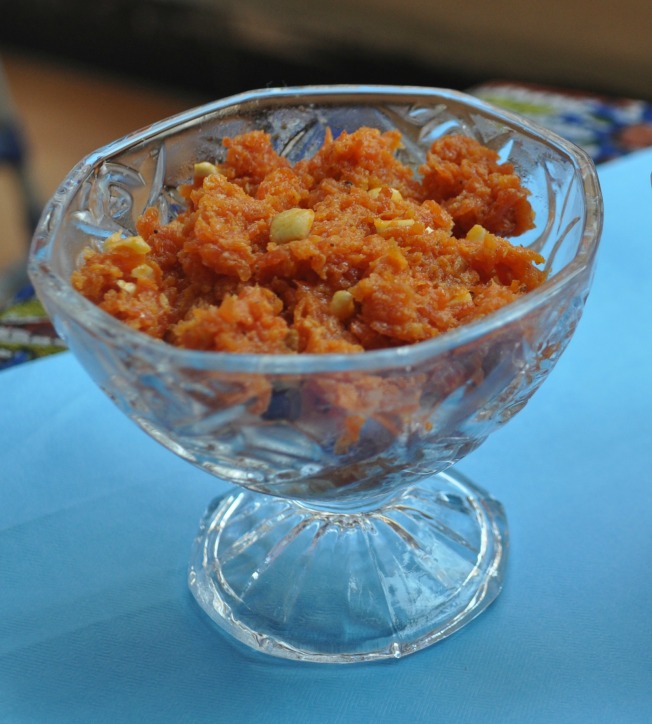When hubby N brought in a box of gajar halwa from the best sweets shop in the town – I was really excited! However, I was a bit taken aback when I opened the box – it was not red or anywhere near – but all nearly white with an overload of khoya/ mawa. Still, I put in a spoonful in my mouth and could not believe it qualified to be called ‘gajar’ ka halwa. There was ghee, khoya, sugar, cardamom and whole pieces of dryfruits. Looked like they did not even bother to grate the carrots – there were chunks which still had a bite to them. I don’t think I ate more than a spoon of this – what a huge disappointment. No wonder mom always believed in making her own soft and creamy version – even if it was five kilos for a birthday party. Nostalgic with memories of the entire house filled with the aroma of carrots cooking in bubbling milk with a hint of cardamom – I decided to make my own and could not help swelling in pride when hubby N and baby A kept asking for more.
Ingredients –
Carrots – 1 kg, red thick ones
Ghee – 3 tbsp or more if you like
Milk – 2.5 cups or more if you like it creamier
Cardamom powder – 2 tsp
Sugar – 4 tbsp or more if you like things sweeter/ the carrots are not sweet
Dryfruits like cashews and almonds – a handful, chopped
Method –
1. Wash and peel the carrots. Grate them. I use my hand grater as I don’t deal with large quantities. It is done in 15 minutes. However, you can use the grating blade of your food processor.
2. Add 2 tbsp of ghee in a wide thick bottomed kadhai and put it on low-medium heat.
3. Add the grated carrots and cook, turning around every few minutes. We want the carrots to go soft and pale – that happens in 15 minutes.
4. Add the milk and let this cook on a low flame. Keep stirring at regular intervals.
5. Now, the liquid released by the carrots and milk will start to boil and evaporate. Once most of it is gone, add in the sugar and cardamom powder.
6. Let this cook till the carrots get glossy and all of the liquid evaporates. This will take nearly 30 more minutes.
7. Add the remaining 1 tbsp of ghee and mix.
8. Cool and store in the refrigerator.
9. When ready to serve, re-heat and add in chopped dry fruits for garnishing.
Notes –
1. You can add as much of ghee, milk, sugar as you want – to make things richer and creamier. The amount of sugar I have added is very less, I like the taste of carrots to prevail.
2. It is a notion that this is a tiresome job, but it is not true. Once you are done with the grating, there is not much active cooking involved. Give it a shot!






